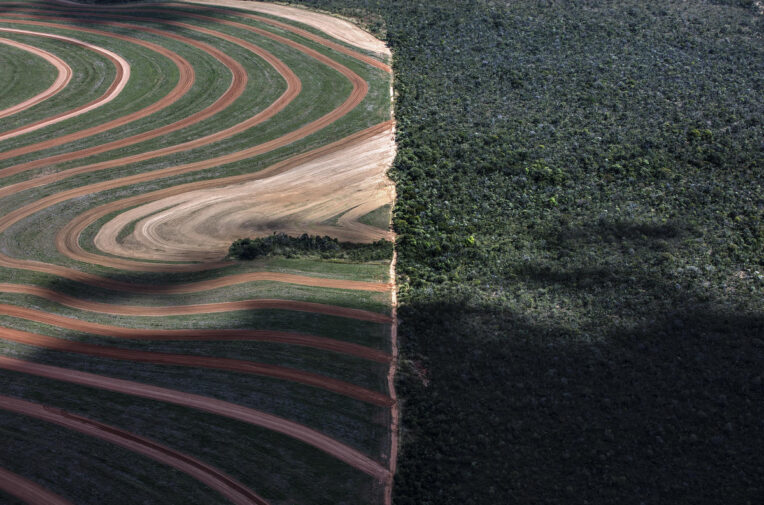
Farmland encroaches on native Cerrado vegetation in the Matopiba region of Brazil. Photo: Marizilda Kruppe/Greenpeace
Razing Brazil’s ‘upside-down forest’: how global appetite for soya is consuming the Cerrado
Has Brazil's agricultural commodities boom come at too high a cost?
Razing Brazil’s ‘upside-down forest’: how global appetite for soya is consuming the Cerrado
Has Brazil's agricultural commodities boom come at too high a cost?
Farmland encroaches on native Cerrado vegetation in the Matopiba region of Brazil. Photo: Marizilda Kruppe/Greenpeace
When farmer Jairo Yamamoto arrived in the backland plains of Piauí, northeastern Brazil, 16 years ago, he had his work cut out. Roads were barely more than rutted tracks, and his new farm lacked electricity.
“The soil was very poor,” he told Unearthed. The farm lies in Brazil’s Cerrado region, with its acidic, infertile soil and knotty woodland.
Yamamoto invested in fertilisers and limestone to balance the acidity of the soil and experimented with techniques like crop rotation. He also cleared vegetation – lots of it – as did the many other farmers who have expanded into the northern Cerrado over the past two decades, seeking cheap, undeveloped land with few environmental restrictions.
Today, Yamamoto grows soya, corn, and grains like sorghum and millet, selling his crops to Cargill and Bunge, the main soya traders in the Cerrado. Producers like him have helped to transform Brazil into an agricultural powerhouse, supplying much of the world’s beef and sending soya all over the world to feed chickens and pigs.
But Brazil’s agricultural revolution has had its cost. The Cerrado is home to traditional and Indigenous communities, as well as an extraordinary diversity of wildlife. It is fundamental for water supply, regional climate stabilisation, and carbon storage. Half of it has already been converted to farmland, and the soya boom is still gathering pace: from 2001 to 2019 a total of 283,000 sq km – roughly the size of the UK and Denmark put together – was deforested.
And as Unearthed and the Bureau revealed today, significant Cerrado deforestation over the past five years, as well as extensive fires, can be linked to Cargill, the Cerrado’s second biggest trader, and the soya it supplies to feed chickens for British supermarkets and fast food restaurants. Cargill made clear that it does not source soya from illegally deforested land.
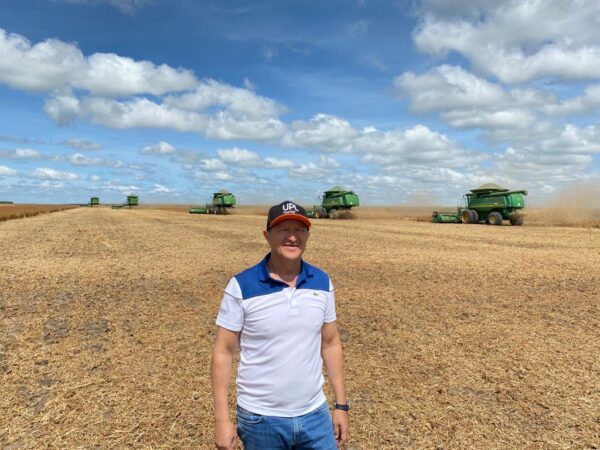
An ecosystem under pressure
The Cerrado is an ecologically unique mosaic of woody savannas and marshes punctuated by vast, flat plateaus. A century ago it covered an area half the size of Europe; today at least 50% has been razed. What is left is increasingly degraded and fragmented, making survival, especially for its large mammals like jaguars, giant anteaters, and maned wolves, even more challenging.
“The remaining 50% is under high pressure for conversion and is impacted by fires and drought,” said Mercedes Bustamante, a University of Brasília ecologist who has studied the Cerrado for two decades. “It’s not like we even have 50% left in good condition.”
Part of the problem comes down to PR, said Ane Alencar, science director of the Amazon Environmental Research Institute. The unshowy beauty of the Cerrado, where gnarled little trees are scattered among flowering shrubs and termite mounds, has always been overshadowed by its northern neighbour’s verdant glamour. With its towering kapok trees and exuberant vines, the Amazon is a storybook jungle paradigm; even Brazilians are often unfamiliar with the Cerrado.
“It’s more difficult for people to understand it. How can we sell internationally, in a marketing way, the Cerrado?” Alencar told Unearthed. “It‘s difficult enough in Brazil.”
Amazonian appeal is part of the Cerrado’s problem. A 2006 moratorium on trading in soya grown on newly deforested areas of the Amazon led to rainforest deforestation dropping 67% from 2008 to 2012.
But demand for soya was still skyrocketing, and inevitably, farmers found a new frontier: Matopiba, the impoverished and relatively undeveloped northern part of the Cerrado named for the states across which it stretches: Maranhão, Tocantins, Piauí, and Bahia.
“The deforestation frontier moving north, through the last remnants of the Cerrado, is driven by soybeans,” Bustamante told Unearthed. “We’re seeing a direct conversion from northern Cerrado to croplands: it’s very intensive, very mechanised.”
The “upside down forest”: an unsung ecological hero
Soya’s expansion in the Cerrado threatens a unique and staggeringly rich landscape, in ways that could have consequences far beyond the savanna itself. The region bursts with wildlife, boasting more than 12,000 plant species, 856 types of birds, 262 reptile species and 251 mammals.
These include delightfully peculiar animals like the leggy, fruit-eating maned wolf, and the Escher-esque giant anteater, which appears almost flat from some angles and wildly bushy from others. The Cerrado has six of South America’s cat species – jaguars, ocelots, oncillas, jaguarundis, cougars and margays, as well as a colony of capuchin monkeys so unusually adept at using tools to crack open palm nuts they’ve been dubbed “Einstein monkeys”.
All told, it contains 5% of all the world’s species of plants and animals, including some 4,000 plant species and 433 vertebrates found nowhere else on earth.
“If these species are lost here, they are totally lost,” Bustamante said.
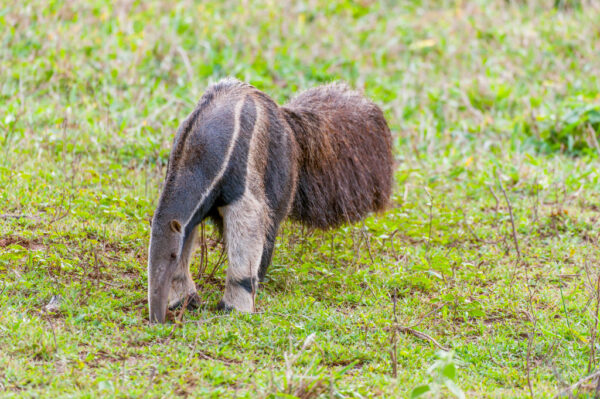
As a central highland, the Cerrado drains water down to the rest of the continent, earning it the moniker “cradle of waters.” Eight of Brazil’s 12 river basins are fed by the Cerrado: it helps to flood the Pantanal wetlands – which are also full of wildlife – and supplies much of Brazil and its neighbouring countries with water. Because 80% of Brazil’s electricity comes from hydroelectric power plants, it is vital to energy security.
While its crooked trees and shrubs might look sparse from ground level, Cerrado plants have extraordinarily long roots that have evolved to drain water slowly through the biome’s deep, spongy clay soil, and draw on it during the dry season. Some plants have as much as 75% of their biomass underground, leading ecologists to dub the Cerrado an “upside down forest”.
This complex underground root system makes the Cerrado a massive carbon sink: it is estimated to store the equivalent of 13.7bn tonnes of carbon dioxide – significantly more than China’s annual emissions.
These roots also function to help drain water to one of the world’s largest aquifers: the Guaraní. Shallow-rooted soya plants are simply not capable of performing the same function, said Bustamante. Some evidence suggests the Guaraní aquifer has passed a tipping point where more water is being withdrawn than replenished.
But the Cerrado is highly vulnerable: only 8% has any form of legal protection. For the rest, local laws allow up to 80% of a private property’s area to be legally deforested, decreasing to 65% where the Cerrado borders the Amazon. In the Amazon, only 20% of a property can be legally cleared.
A growing global population
Yamamoto, the Piauí farmer, said he is aware of increased pressure around sustainability, and that his farming practices show he cares about the environment.
Figures from Aidenvironment, a non-profit research company, confirmed by Yamamoto, show 20 sq km of deforestation on his Fazenda Esperança over the past five years. There is no suggestion that any was illegal.
He said he has left 35% of his property untouched – more than is legally required – and that he uses technology to minimise pesticide use. But he’s also bullish about the moral burden of feeding a growing global population, and insists his effect on the deeply impoverished region has been net positive, adding jobs and creating infrastructure in a region where half the population rely on monthly state benefits. Yamamoto says he employs 60 permanent staff, mostly locals, pays generous bonuses, and supports the local hospital.
“We have a dilemma posed today, on the one hand, population growth, which demands a growing food supply, and on the other, the environmental issue,” Yamamoto said. “We also have a great social responsibility, [Piauí] is a very poor state.”
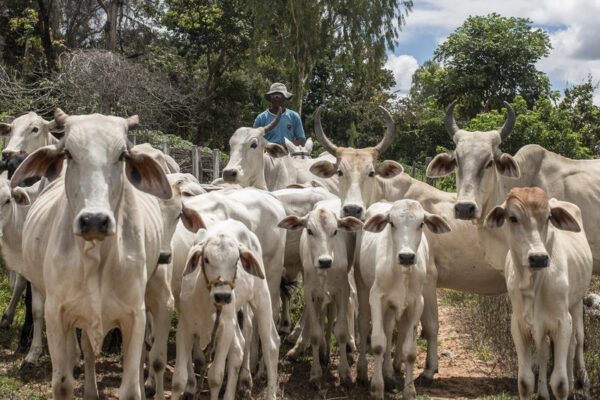
Not all farmers take Yamamoto’s approach, however, and agribusiness in Matopiba has not always benefited locals. Dilvanice Alves das Chagas grew up in Bahia’s Formosa do Rio Preto, the heart of the remote agricultural frontier of Matopiba.
Her village, Cachoeira do Vale do Alto Rio Preto, is home to 62 “geraizeiro” families who have lived in the area for generations. Often descended from escaped slaves and landless peasants, geraizeiros are traditional Cerrado communities who traditionally live by subsistence farming and foraging for Cerrado fruits and plants.
When agribusiness started to arrive, members of the Cachoeira community hoped it might improve services in their area, or create jobs for locals. It didn’t.
“We haven’t seen one benefit from this. We don’t have electric energy, there are no good schools, we don’t have a health post. The nearest clinic is still 80km away,” Chagas said.
Commodity agribusiness like this requires large acreages and investments at scale, and investments made in the region tend to only benefit wealthy, well-connected producers and large multinationals, said Willian Menezes, a doctoral researcher studying the dynamics of agriculture in Western Bahia.
“Large global firms dominate the soybean circuit, command the market for pesticides, fertilisers, agricultural machinery and implements… I guarantee you, based on research over four years, that soya did not bring wealth to the population of these small cities… the local economy is not active,” he added.
Timelapse satellite image showing deforestation in the municipality of Formosa do Rio Preto, western Bahia state, Brazil.
Formosa do Rio Preto is emblematic of the transformation of Matopiba: locals say that as recently as 15 years ago native vegetation rendered large swathes of the countryside almost impassable.
Today, it holds the dubious honour of being the Cerrado’s most-deforested municipality, with vast farms supplying soya to giant international traders.
“There are no trees, no vegetation left on the high plateaus. Everything is soya, corn, cotton. It’s as though animals simply don’t exist any more,” said Adão Batista Gomes, an older member of the Cachoeira village.
Today the Cachoeira community are enmeshed in a land conflict that has periodically flared into violence with a huge complex of farms known as Agronegócio Condomínio Cachoeira do Estrondo. Footage recorded by a geraizeiro in 2019 appears to show a member of Agronegócio Estrondo’s private security guard shooting Chagas’ husband, Jossone Lopes Leite, when he tried to retrieve his cows.
A 2019 Greenpeace Brazil investigation documented intimidation and violence against the local traditional communities as well as checkpoints, fences and ditches that cut across community land, restricting the geraizeiros’ movement.
The geraizeiros say their lives have been completely upended by soya farming. They can no longer graze their cattle on the plateaus, and the plants they relied on have been replaced with endless soya fields. Without chapada vegetation rooting it in place, sandy topsoil silts up the rivers and springs which are their only source of water.
“I had a wonderful childhood here playing by the river but for the last few years everything I’ve seen is only destruction,” Chagas said. “Soya makes them even richer, it makes them a huge profit, but it destroys everything for us.”
Agronegócio Estrondo said it “disapproves of acts of violence” and denied blocking any “public roads”. A spokesperson said: “In 2010, a private security company was hired to provide property security for the project and ensure the safety of workers and residents of the project, when they became victims of invasions, thefts and destruction.” The land disputes are still in court, the company added.
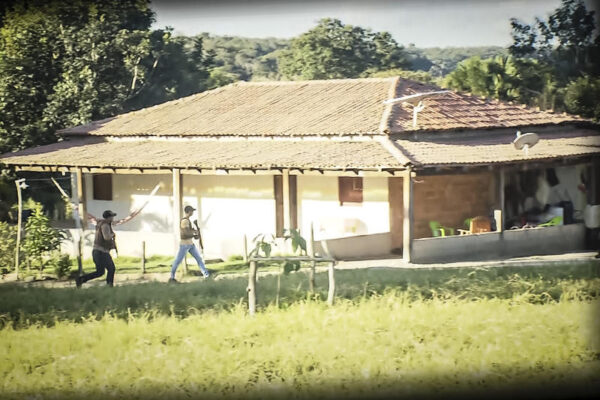
Consumers are increasingly concerned about the delicate interconnections of land-use, climate, and diet. But there is little hope of a top-down effort to protect the Cerrado: Brazil’s far-right provocateur president, Jair Bolsonaro, has at times seemed to place environmental destruction at the heart of his agenda.
Meanwhile, critics say that new legislation proposed by the British government prohibiting the import of foodstuffs linked with illegal deforestation will have little effect in the Cerrado, where most deforestation falls within the permissive local rules.
“This bill helps to protect mainly the Amazon, because in the Amazon it’s 80% protected, but for the Cerrado, this legislation is absolutely not enough,” said Isabel Figueiredo, an ecologist at the NGO Institute for Society, Population and Nature.
Congressman Rodrigo Agostinho, leader of Brazil’s environmental parliamentary caucus, said: “Laws like this help to put pressure on the market and on consumption,” he said. “But we need several countries to track products that affect the environment. We need a greater union of effort.”
The Amazon Soy Moratorium was voluntary and led by soya buyers. Traders Louis Dreyfus and COFCO have already signalled that they would support a similar industry-wide agreement to stop trading in soya grown on newly deforested Cerrado land. One study estimated this would prevent the direct conversion of 36,000 sq km of native vegetation to soybeans by 2050.
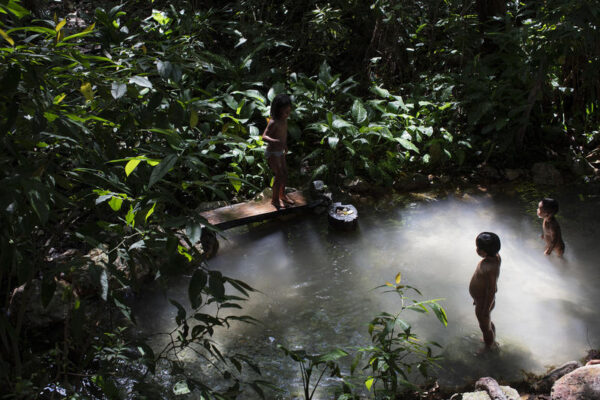
But chatter about a Cerrado soya moratorium quieted after Cargill, the second biggest soya trader in the Cerrado after Brazil’s Bunge, rejected the idea last June. Campaigners say that competitors will follow Cargill’s lead. Instead, Cargill pledged a $30 million fund for alternative ideas to limit Cerrado forest loss.
One aspect that gives researchers some cause for hope is that the Cerrado contains large tracts of degraded pasture; the exotic, invasive molasses grass widely planted for cattle only survives the Cerrado’s nutrient-poor soil for a couple of years of intense grazing, leaving little but dust behind. If these were renovated, soya farming could continue, or even expand, without clearing more vegetation.
Yamamoto believes this is where the future of soya expansion lies.
“In Brazil, we have enough land that was used for cattle and can be modified for agriculture that you don’t need to destroy any more [forests], or at least not much,” he said. “But we need to communicate better and show to the world that we are already preserving a lot here.”
Figueiredo’s experience in the field has given her little reason, so far, to trust corporate proclamations on sustainability.
“We really see that they make commitments and good speeches abroad, but here they don’t control the [supply] chain, they just don’t care,” she said, adding: “It’s not sustainable for capitalism to take care of the environment.”
She believes that real progress would require a radical rethinking, the generation of a green economy that could generate income and sustainable development based on products from the Cerrado itself.
“There’s tourism of course, but also fibres, honey, nuts, flowers, many other products you can produce based on native fruits and plants,” she said. Plant biodiversity is so vast in the Cerrado that destroying it without fully exploring the possibilities for medicine and nutrition would be a huge missed opportunity, she said.
“Right now we are burning a library before reading the books.”

